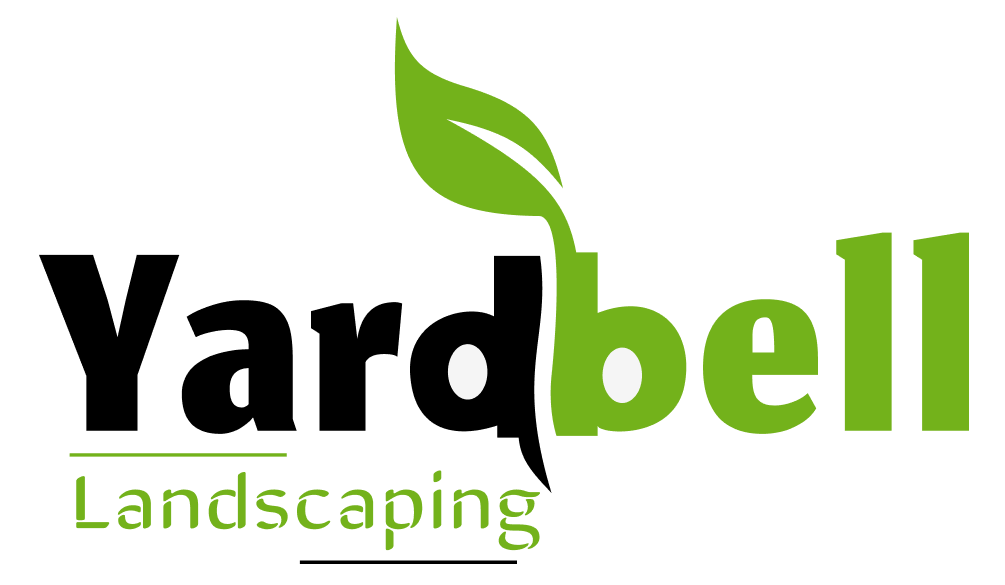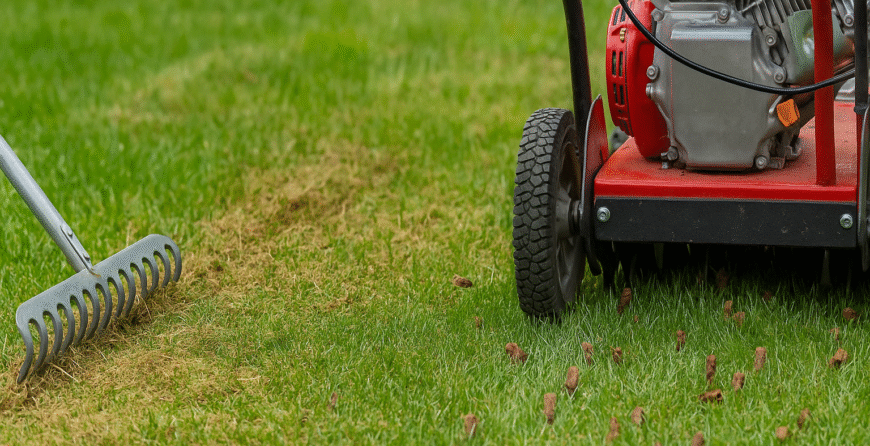Understanding the Basics of Dethatching and Core Aeration
As winter fades and your lawn begins to wake up, you might be wondering how to give it the best possible start. Two of the most effective spring lawn care techniques—dethatching and core aeration—often get confused. But they solve very different problems, and choosing the right one can make or break your lawn’s recovery.
In this guide, we’ll break down what dethatching and core aeration are, how to tell which your lawn needs, and when to do each for the healthiest results.
What Is Dethatching?
Dethatching removes the dense layer of dead grass and organic debris—called thatch—that builds up between your lawn’s soil and green grass blades. A thin layer of thatch can be beneficial, but when it exceeds half an inch, it starts blocking vital elements your lawn needs.
Why Thatch Is a Problem
- Blocks water, air, and nutrients from reaching roots
- Encourages pests and lawn disease
- Makes your lawn feel spongy and uneven
- Prevents seed from making soil contact during overseeding
Signs Your Lawn Needs Dethatching
- Feels springy when walked on
- Poor water absorption
- Brown spots and thinning grass
Best Time to Dethatch
- Early spring or fall for cool-season grasses
- Late spring to early summer for warm-season grasses.Consider professional dethatching services for the best results without damaging your lawn.
What Is Core Aeration?
Core aeration involves removing small plugs of soil from your lawn to relieve compaction and improve nutrient flow to the roots. It helps create better pathways for water, air, and fertilizers, promoting deep root development.
Why Compaction Hurts Lawns
- Limits root growth
- Prevents proper water and nutrient absorption
- Can suffocate the lawn in heavily trafficked areas
- Causes runoff, increasing watering needs and soil erosion
Signs Your Lawn Needs Aeration
- Pooling water after rain or watering
- Patchy growth and thinning grass
- Tough, dense soil that is hard to penetrate
- Difficulty inserting a screwdriver into the soil
Best Time to Aerate
- Spring or fall for cool-season lawns
- Late spring or summer for warm-season lawns
Tip: Book your core aeration service early in the season for maximum impact. Pairing it with overseeding and fertilization enhances its benefits.
Bonus Boost: Overseeding and Fertilizing
After dethatching or aeration, your lawn is primed to absorb nutrients and support new growth. This is the perfect time to:
- Overseed: Fill in bare or thin areas to promote a thicker, more uniform lawn.
- Fertilize: Apply a starter fertilizer rich in phosphorus to support seed germination and root development.
Dethatching vs. Core Aeration: Key Differences
| Feature | Dethatching | Core Aeration |
| Purpose | Removes thatch buildup | Reduces soil compaction |
| How It Works | Rakes up debris | Extracts soil plugs |
| Best For | Spongy, choked lawns | Dense, compacted soil |
| Recommended Add-ons | Overseeding | Overseeding & fertilization |
What Does Your Lawn Really Need?
- Spongy turf or visible thatch >½ inch? → Go with dethatching.
- Thin, patchy lawn or hard soil? → Choose core aeration.
- Want the greenest lawn in the neighborhood? → Follow with overseeding and fertilization.
DIY or Hire a Pro?
You can rent dethatchers or aerators, but improper use can damage your lawn. Hiring a professional ensures:
- Correct timing based on grass type
- Safe and effective use of equipment
- Proper cleanup and post-care guidance
Professional services also offer combination packages, saving you time and providing comprehensive results.
Final Thoughts
Whether you need to tear out thatch or break up hard soil, the right treatment this spring sets your lawn up for a season of healthy growth. Pair your choice with overseeding and fertilization, and you’ll enjoy a greener, thicker, healthier lawn all summer long.
FAQs:
Q1. What is the difference between dethatching and aeration?
Dethatching removes the surface layer of dead grass and debris (thatch), while core aeration pulls out soil plugs to reduce compaction and improve root health.
Q2. How do I know if my lawn needs dethatching?
If your lawn feels spongy or the thatch layer is thicker than ½ inch, it’s time to dethatch.
Q3. When is the best time to aerate your lawn?
Early spring or fall for cool-season grasses; late spring through summer for warm-season grasses.
Q4. Can I dethatch and aerate at the same time?
It’s possible, but not recommended on the same day. Space them out to avoid stressing your lawn.
Q5. Should I overseed after dethatching or aeration?
Yes. Both processes prepare the soil to better absorb seeds and nutrients, making it the perfect time to overseed.


